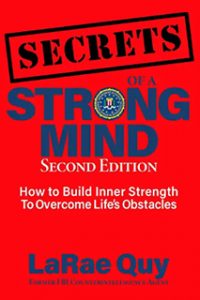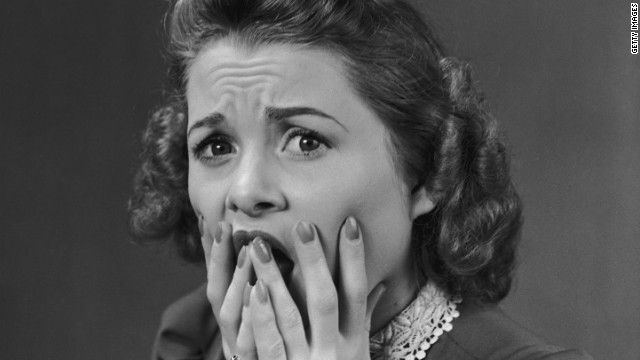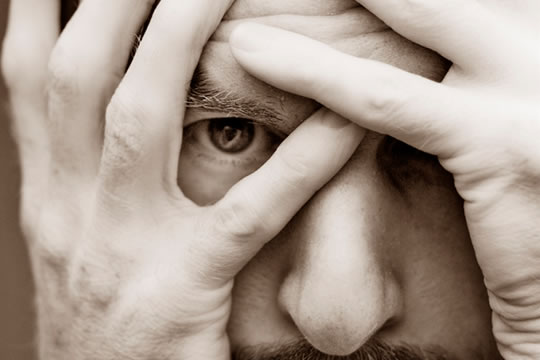If you want to know what a person is really thinking or feeling, pay more attention to their body gestures than the words they use. When there is a conflict between what a person is saying and what they are doing, body language will give you more accurate feedback.
Babies will pucker their lips when fed food they don’t like, whether they were born in Africa or Norway. A five-year-old child is likely to cover their mouth when they tell a lie. This body gesture continues to mature throughout their adult life. Instead of covering their whole mouth, they may rub their fingers around their lips.
Famously, one of the most telling body gestures was Bill Clinton as he answered questions about Monica Lewinsky in front of a grand jury. His two front index fingers pressed together and touched the tip of his nose; the gesture effectively covered his mouth in the process.
Research at UCLA shows that only 7% of communication is based on the actual words we use. 38% of communication is based on the way words are expressed (including tone and voice). That leaves a whopping 55% of communication to be based on body gestures.
No matter how hard you’ve worked to perfect your presentation or polish your elevator speech, it’s a competitive market and polishing your body gestures will give you a powerful edge.
Understanding how people communicate is a core component of mental toughness. Accurate communication helps leaders and management to be emotionally competent, a skill that can provide a valuable and reliable way of evaluating both their team members and the market competition.
Here are some things you need to know about accurately interpreting body gestures:
1. BODY GESTURES COME IN CLUSTERS
Conversations are a string of words put together to create meaning. One word, by itself, can mean many things, or nothing. A sentence, however, expresses complete thoughts. Similarly, one gesture can mean anything—it’s only when we put them together that they have meaning. Nonverbal gestures come in clusters so it’s important to observe a person’s initial cluster of gestures to establish a norm.
It’s dangerous to interpret a solitary gesture—scratching the head can mean confusion or it could indicate a serious case of dandruff.
TIP: Many people punctuate with body language gestures and movement while others are relatively still. They key is to notice when these gestures change during a conversation. Pinpoint what word or topic was introduced in the conversation that produced the change in behavior.
2. WOMEN’S INTUITION OR BODY GESTURES?
A hunch or gut feeling that someone has not been truthful really means that the spoken word and the body language do not agree. This is one aspect of intuition. Are women better at it than men? Here is one very simple explanation:
Women who have raised children are usually better at hunches than others. For the first few years, mothers rely almost exclusively on the nonverbal messages of young children. It is the way they communicate with each other.
TIP: The UCLA research also revealed that our facial expressions produce the most important body gestures when it comes to conveying our emotions and feelings. Young children and babies provide excellent opportunities to fine-tune your ability to accurately understand what the child is trying to communicate.
As an FBI counterintelligence agent, I worked closely with the FBI’s Behavioral Science Unit on several of my cases. Here are some tips I want to share with you on how to recognize and interpret body language:
3. TIPS ON HOW TO READ HEAD MOVEMENTS
The head shows the most expressive body language characteristics. There has been a lot of research done on reading facial features and here are some generalizations that you can rely on when trying to read a person’s face to determine whether or not they’re being sincere:
- Contempt – lip corner tightens and lifts on one side of the face
- Happy – a real smile will always have crow’s feet wrinkles and pushed up cheeks
- Surprise – lasts for only a second: eyebrows raised, mouth open, eyes wide open
- Anger – eyebrows down and together, narrowing of lips
4. TIPS ON HOW TO READ EYE MOVEMENTS
As a general rule, breaks in eye contact are the most important non-verbal gesture. If you suspect deception in a conversation, here are some eye clues to watch for at the point at which they tell a lie:
- Closing the eyes
- Covering the eyes
- Glancing at watch
- Showing intense interest in fingernails
- Looking out the window or at the floor
- Avoid looking you in the eye during the moment of deception
- Rapid eye movement
- Raised eyebrows
Here are some eye clues that can reveal what a person is focusing on during your conversation:
- Recalling a visual memory—eyes move upward.
- Remembering something they heard—eyes move to the side
- Recollecting a feeling—eyes look down and to the right
- Thinking to oneself—eyes look down and to the left
5. TIPS ON HOW TO READ HAND MOVEMENTS
There are more connections between the brains and the hands than any other body part.
Positive impressions:
- Palm up—nonthreatening. Even animals recognize this approach as friendly.
- Squeezing thumb against the fingertips—avoids intimidating the audience
- Shaking with two hands is meant to convey sincerity and trust. Don’t do this unless you and the other person have a strong bond of some sort. Otherwise, you end up coming across like a smarmy politician.
- Grasping elbow with left hand—communicates depth of feeling and was commonly used by Bill Clinton with everyone.
Negative Impressions:
- Holding the shoulder with left hand—invades personal space and may result in a hug
- Palm down—authority. Think of the Nazi salute.
- Pointing finger—leaves a negative feeling in most listeners
Top performers understand body gestures and avoid unspoken signals that could sabotage their best efforts to move forward.
© 2017 LaRae Quy. All rights reserved.
You can follow me on Twitter, Facebook, Instagram, AND LinkedIn
Are you mentally tough? Here is my FREE Mental Toughness Assessment
Get my new book, “Secrets of a Strong Mind (second edition): How To Build Inner Strength To Overcome Life’s Obstacles”

Author of “Mental Toughness for Women Leaders: 52 Tips To Recognize and Utilize Your Greatest Strengths”








There are times my son will say to me, “Why are you making that face?” I think I’m giving him the scoop with my words, but he’s getting the message underneath…. even when I think I’ve got it all under wraps. This is a great resource, LaRae!
Alli
Great reply, Alli Polin.
When I was barely able to see over the counter, my mother and I were having a “discussion”. At one point she snapped, “Robert, stop using my words against me.”
Too, there are differences in cultural norms.
Personal space and Touching, are two that come to mind.
Slim.
Love this post LaRae and your insights into what are bodies are saying!
When I present my communication workshops I always remind participants that one of the worst hand gestures for adults to use is finger pointing because it reminds us of being scolded or reprimanded by a parent or a teacher. When adults see that finger wagging they shut down and stop listening to anything we are saying.
Thanks LaRae for some fascinating info on body language!
Q!
Another brilliant article.
I’ve always relied on verbal clues. One my Dad taught me when I was about 9.
I did not say he took the money. He repeated it several times, each time emphasising a different word to completely change the meaning.
Later in life, I learned.
You are not going.
You’re not going
You aren’t going
Then too,
If I knew he was going to the store to get beer, I woulda went. But more importantly, he bought two cases and when he got back he gave one to myself.
Again brilliant.
I will bookmark it and read it again, carefully.
Sincerely,
M
Thanks LaRae!
Such a valuable reminder – both for the speaker and the listener!
Crossing arms, rolling eyes and pointing are great examples of really obvious gestures, but you’ve tapped into the more subtle – so useful! I imagine this would be have been vital to your FBI training, but so useful to all of us, whatever our chosen profession!
Thanks so much for this great post!
Rebecca